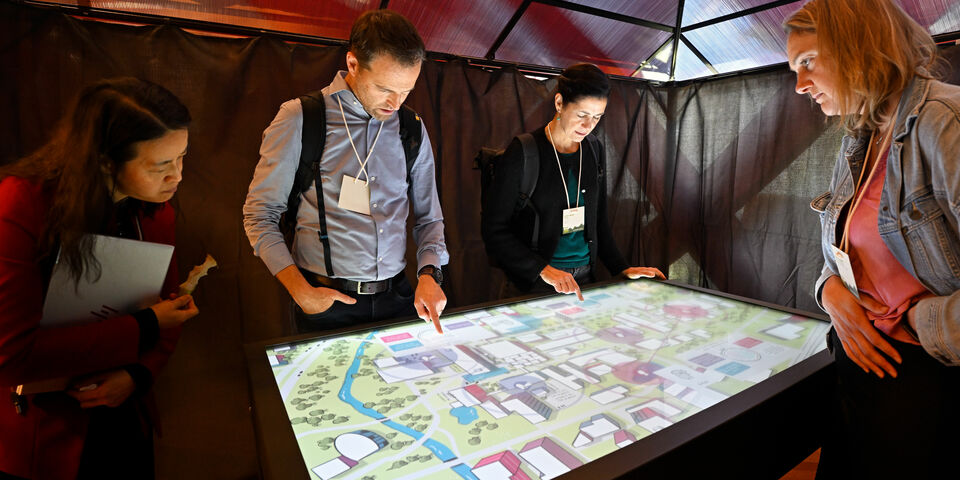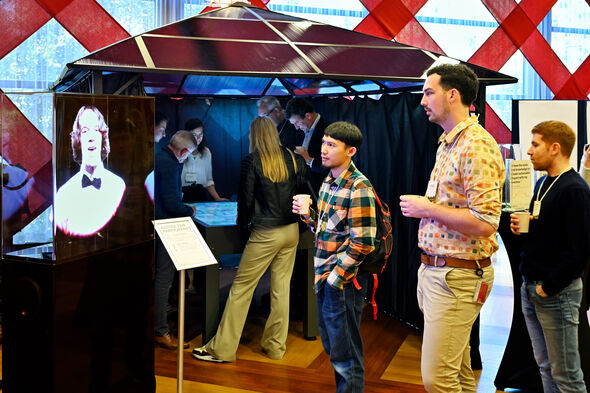TU/e group presents ‘university of the future’ at DDW
This Dutch Design Week, visitors can experience what the ‘University of the Future’ will look like. If it’s up to the eponymous TU/e project group, that is. In this university of the future, a variety of stakeholders work together to address societal challenges.
In 2021, TU/e innovation Space won the national government’s Dutch Higher Education Award. One of the things for which the cash prize that came with this – 1.2 million euros – was used was to set up a large-scale project: ‘University of the Future’ (UotF).
No rules
“With this project, we’re researching what the university and education methods could look like in 2050,” explains Marcello Sala, one of the tree UotF project leaders. To flesh this out, over thirty co-creation sessions were organized as part of the project. This gave all kinds of internal and external stakeholders the opportunity to contribute their ideas about the ideal university of the future. There were no rules or frameworks that the participants had to keep in mind. “The question was, quite simply: if everything were possible in the way of money, education, legislation, and so on, what would the university of the future look like?” says Sala.
Transdisciplinary
Thanks to all of this input, the UotF project team has managed to draft a scenario on the university in 2050. Transdisciplinarity is a common theme in this. “This means that various stakeholders with different expertises contribute ideas about certain societal challenges,” Sala explains. This goes beyond interdisciplinarity in which different areas of expertise work together, for example, from two TU/e departments. This is because transdisciplinary cooperation also involves practical experiences from outside academia. Translated to the university in 2050, this would mean that you would no longer just have the distribution of students being taught by lecturers, but that there is more of an equal learning environment where students, teachers, researchers and outside companies or institutes - which all have their own expertise - work together and learn together about the topic at hand.
This topic, in turn, depends on the choice of the student, as students’ freedom of choice steadily increases in the UotF scenario. “We want students to be able to come in with the desire to delve into a specific issue, for example the increasing number of dementia patients in connection with the aging population. The curriculum, but also which collaboration partners will be involved, can then be completely tailored to that issue,” says Sala.
Dutch Design Week
Visitors to UotF’s DDW exhibition are catapulted right into this future university. Not necessarily as a student, but as a ‘learner’, Sala explains. “It’s exactly because of the transdisciplinarity that we often refer to ‘learners’ in our scenario. After all, the university of the future is all about collaborating and pooling everyone’s expertise to tackle a problem, whether it’s a student, policymaker, or healthcare worker.”
After a short introduction by a 'student from the future', visitors to the exhibition are asked about their interests and expertise via touch screen tables (see main photo). “Based on this, the computer selects one of three topical challenges: the growing numbers of dementia patients due to aging, higher temperatures in the region due to climate change, and people who have difficulty with basic skills such as reading, writing, or arithmetic.” In a game of about six minutes, visitors are then asked what they could and would like to contribute in solving this problem and how much time they’d be able to free up for this. Afterwards the visitors get to see how much impact they can reach with their joint plan.
The goal of the exhibition, therefore, isn’t to collect new input, but mainly to allow visitors to experience the university of the future and what it can be like to contribute to this. “But,” Sala continues, “if we do receive valuable input we’ll take it on board of course.”
UotF can still be visited at the Enversed Experience Center on Strijp-S every day until Sunday. The exhibition is open from 11 AM to 6 PM.



Discussion